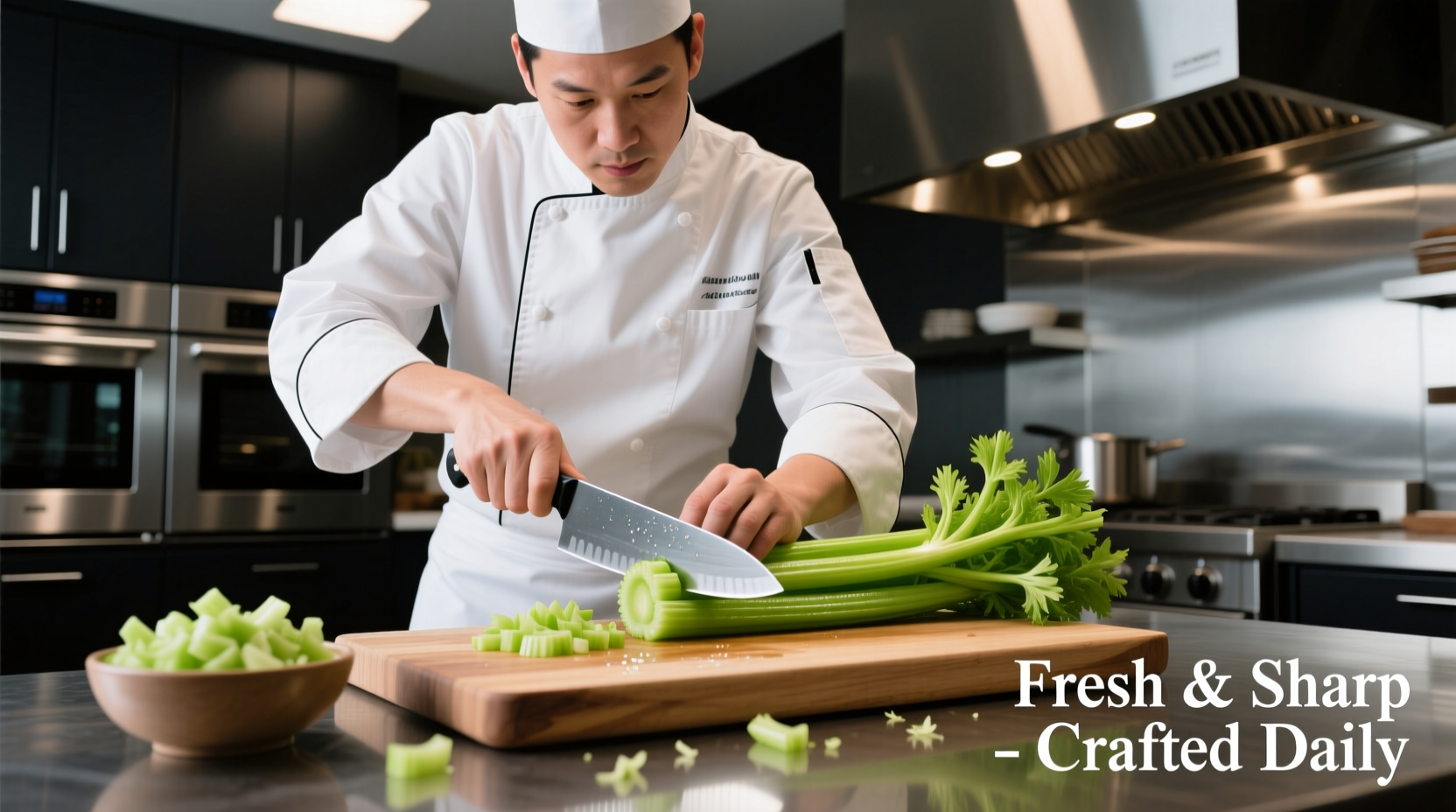Ever searched for 'celery man' and found confusing results? You're not alone. This ambiguous term doesn't point to one specific person but rather reflects growing interest in celery's culinary significance. Let's cut through the confusion with practical insights you can use immediately in your kitchen.
Decoding the 'Celery Man' Mystery
Despite popular searches, no single 'Celery Man' dominates culinary circles. The term typically emerges in two contexts:
- Chefs emphasizing celery's critical role in flavor foundations like mirepoix
- Health advocates promoting celery juice trends, often referencing Anthony William (Medical Medium)
According to USDA nutritional data, celery contains valuable compounds like phthalides and apigenin that contribute to its distinctive flavor profile and potential health benefits. However, many online claims about 'miracle celery cures' lack scientific backing from authoritative sources like the National Institutes of Health.
| Celery Fact | Common Myth | Scientific Verification |
|---|---|---|
| Contains vitamin K and potassium | "Detoxifies" the body | USDA confirms nutrients but no special detox properties beyond normal vegetable function |
| Provides dietary fiber | "Cures chronic illnesses" | No clinical evidence supporting disease treatment claims |
| Contributes to hydration | "Must be consumed as juice for benefits" | Whole celery provides fiber; juice removes this benefit |
Why Professional Chefs Treasure Celery
Celery isn't just for crudité platters. In professional kitchens, it serves as one-third of the essential mirepoix foundation (with onions and carrots) that forms the flavor base for countless dishes. The key lies in proper preparation technique:
- Uniform chopping ensures even cooking
- Slow sautéing releases aromatic compounds without bitterness
- Adding at the right stage builds flavor layers
Unlike common misconceptions, celery's value isn't limited to its stalks. The leaves contain concentrated flavor compounds and work beautifully as a fresh herb in salads or as a finishing touch to soups. Even the often-discarded base can regrow in water, providing fresh celery for multiple harvests.

Celery Through Culinary History
Celery's journey from medicinal herb to kitchen staple reveals why chefs value it today:
- Ancient times: Used medicinally in Mediterranean regions
- 17th century: Brought to European tables as a vegetable
- 19th century: Became standard in French mirepoix technique
- 20th century: Industrial farming developed the familiar Pascal variety
- 2010s-present: Juice trend sparked renewed interest in celery
Practical Celery Techniques You Can Use Today
Transform your cooking with these chef-approved methods:
Maximizing Flavor Extraction
Cook celery slowly over medium-low heat until translucent (about 8-10 minutes). This process, called sweating, releases volatile compounds without caramelizing, creating a clean flavor base. For stocks, include both stalks and leaves for maximum depth.
When to Use Different Celery Parts
Understanding celery's components helps you use it effectively:
- Stalks: Ideal for mirepoix, stocks, and braises
- Leaves: Use like parsley in salads or as garnish
- Base: Regrow in water or use in stocks
- Seeds: Powerful seasoning for dressings and rubs
Avoiding Common Mistakes
Many home cooks miss celery's potential by:
- Chopping unevenly (leads to inconsistent cooking)
- Adding too late in the cooking process
- Discarding nutrient-rich leaves
- Overcooking until mushy
Context Matters: When Celery Shines (and When It Doesn't)
Celery works best in specific applications while falling short in others:
- Ideal for: Soups, stocks, braises, stews, and as part of flavor foundations
- Limited value: As a standalone vegetable without proper seasoning
- Avoid in: Dishes requiring crisp texture after long cooking
- Better alternatives: When strong herbal notes are needed (use celery leaves instead of stalks)
Remember that celery's subtle flavor means it works best as part of a flavor ensemble rather than a solo ingredient. Its magic happens when combined with complementary ingredients that allow its aromatic compounds to shine.
Separating Fact from Fiction in Celery Trends
The recent celery juice phenomenon has generated both interest and misinformation. While celery contains beneficial compounds, many exaggerated claims lack scientific support. The Academy of Nutrition and Dietetics emphasizes that whole vegetables provide fiber that juicing removes, making whole celery consumption generally more nutritionally complete.
Instead of chasing trending celery 'miracles,' focus on incorporating it thoughtfully into balanced meals where its flavor-enhancing properties can truly shine.











 浙公网安备
33010002000092号
浙公网安备
33010002000092号 浙B2-20120091-4
浙B2-20120091-4